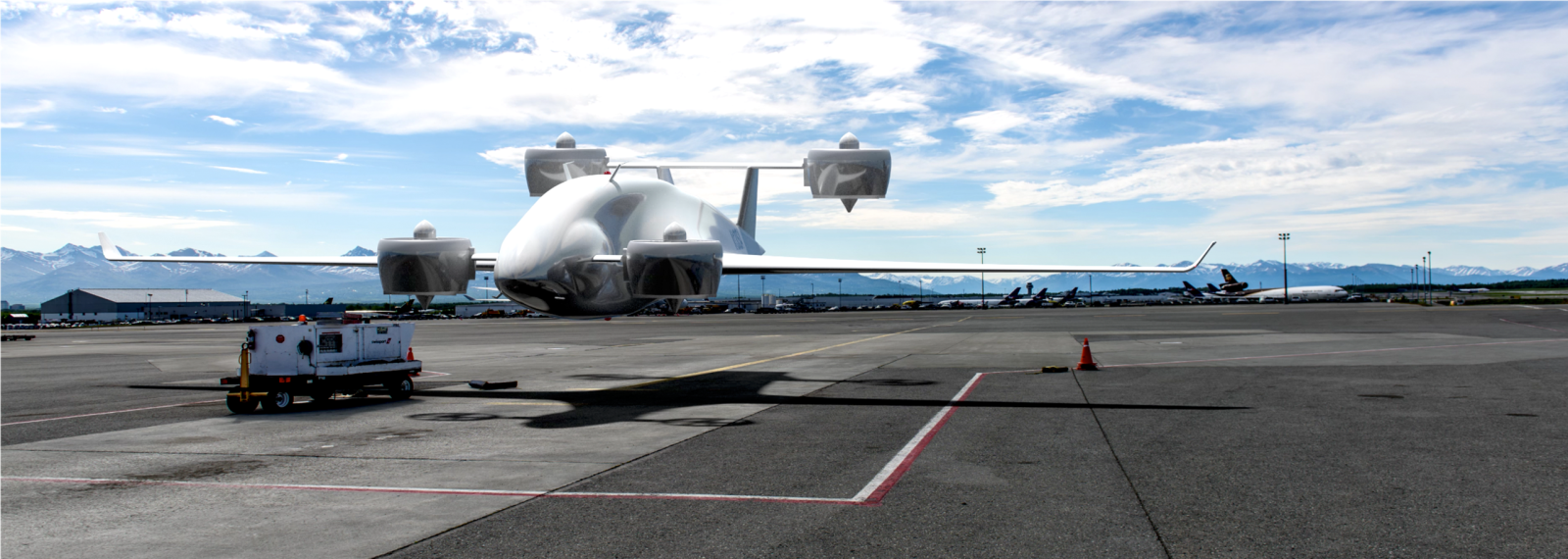
Companies around the globe have been at work developing a category of UAV capable of hauling weightier payloads than the typical delivery craft can, and an Oxnard, California-based business says it’s done that – and more. Meet the Rhaegal super heavy-lift drone, whose Sabrewing manufacturer credits the craft with recently setting a world record by hovering with a payload of 347 kg (829 lb.).
In addition to muscling that much mass off the ground, Sabrewing’s Rhaegal Alpha 1 cargo drone also out-sizes both UAVs used for delivering goods to households and across work sites – and even most specialized heavy-lift craft. It sports a wingspan of 17 meters and a body length of 14.6 meters, and has 16 cubic meters of internal payload space. The all-weather aerial hulk is capable of maximum speeds of 445 km/h, and average cruise speed of 333 km/h at 22,000 feet.
Read: UK’s MoD seeks heavy-lift drones for Royal Navy supply missions
Though it’s capable of runway-free vertical liftoff – the mode used in what Sabrewings claims was the record-setting flight – the drone is designed to take the heavy-lift concept to another dimension using horizontal takeoff like a plane. Its maximum payload weight using that kind of thrust is listed as a backbreaking 4,545 kg, and the company says it will manage 2,454 kg through vertical ascent.
Apparently averse to showing off, however, Sabrewings limited the heft of its new heavy-lift drone’s first test to the new mark-establishing 347 kg.
“We are extremely proud to have accomplished this milestone… (but) this is only a fraction of what this aircraft can carry,” said Ed De Reyes, Sabrewing CEO. “But it proves that we’re able to lift more cargo on our maiden flight than any previous cargo UAV that has ever flown.”
Available for preproduction order, Rhaegal’s heavy-lift chops lie in Sabrewings design using an electro-turbo drive train to considerably ramp up the drone’s power.
The system was developed by French company Safran based on a helicopter engine, and uses gas- or steam-powered turbines to create energy that powers electric generators. It can operate on 50% sustainable biofuels.
Read: Scottish company invents first hydraulic motor heavy-lift drone
In addition to putting more “heavy” in the drone’s heavy-lift capacities, Sabrewing attained additional power and efficiency from the Rhaegal through improvements to its blades, ducts, and shape of the craft’s fan shrouds – resulting in a 30% increase in thrust.
“We’re able to generate more propulsive energy – much more efficiently – with a turbo-electric drivetrain and ducted fans than with batteries or directly driven by the turbine,” said Oliver Garrow, chief technology officer at Sabrewing. “We expect to be one of the first aircraft manufacturers to use hydrogen when Safran completes testing on their motor in the next couple of years.”
Future users can, of course, use the UAV to transport more common payload like coffee orders, pizza, or sensors. But given its heavy-lift capacities, Sabrewing customers will more likely fly the drone with cargo weighing as much as pianos, mid-sized cars, and pretty much any other massive freight that will fit into its hold.
FTC: We use income earning auto affiliate links. More.


Comments